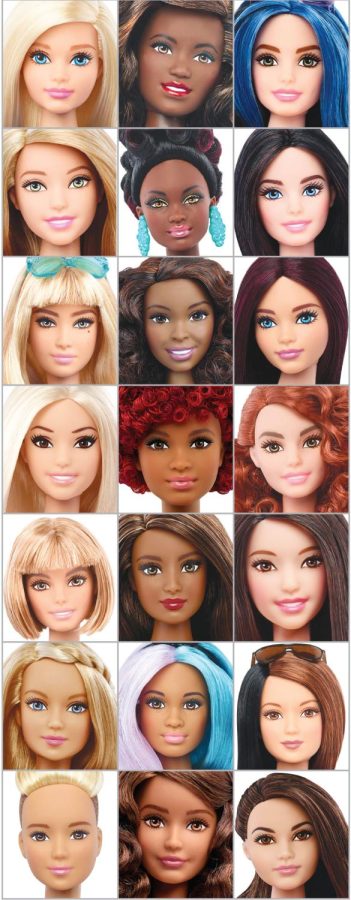Kent State reacts to Barbie’s new body types
February 14, 2016
When freshman fashion design major Whitney Davis was growing up, she didn’t own many Barbie dolls.
None of them looked like her. Instead, she played with the Bratz line of dolls, which had a brown skin tone like hers.
“As I got older I did start thinking, ‘Why aren’t there different Barbies? Why do they have to look the same,’” Davis said.
Now, girls like her have the chance to find those different Barbies.
In March, Mattel, an American toy manufacturer, is issuing three new Barbie shapes: tall, petite and curvy. Barbie will now come in four body types and seven skin tones, with 22 eye colors and 24 hairstyles.
Mattel released multicultural Barbies a few years ago, long after companies like Bratz had stolen part of its market. The new shapes make Mattel fairly late to a national movement to accept different body forms.
Kent State students who grew up playing with Barbie dolls are impressed by the changes.
“The new Barbies aren’t entirely perfect … but it’s a step in the right direction after an incredibly long time coming,” said Taylor Durbin, a senior English major.
“I was more impressed by the new ethnicities more than the body shapes. I felt like the ethnicities were a little more important to the diversity of them,” said Morgan Starkey, a junior biology major. “They now represent a more realistic and larger audience.”
Kent State graduate Bryan Karazsia is an associate professor of pyschology and associate dean for academic advising at the College of Wooster. He has researched the psychological effects of body image with Janis Crowther, Kent State’s associate dean of the College of Arts and Sciences.
“I think it’s a fascinating change, a positive change,” Karazsia said. “There is data to show that preschoolers show preferences for thin toys. They will also assign positive attributes to thin models as opposed to heavier models. So I think the more that children are exposed to dolls of different colors, of different sizes, dressed in different kinds of clothes, presumably portraying different occupations, that is all positive and will be very good.”
Karazsia continued, “I think this is one more example, granted a very popular example, that as humans we are becoming more critical of the media that we consume and we want media that represents who we are.”
Kent State has its own student-led organization called Body Acceptance Movement (BAM) that promotes the acceptance of all body types.
“When I look at the image of the new Barbies, I feel excited,” said Kylie McCann, president of BAM. “They are all so beautiful and different. Having differences makes the beauty of the others much more apparent.”
McCan said the shift in body types is very exciting for BAM. Having children play with toys that are diverse will give them a more open mind, she said.
“(Children today are) not going to feel limited because they’re going to have a Barbie that looks like them,” Davis said. “If they dress them (Barbies) like a doctor, they’ll think, ‘One day, it can be me.’ “
Stephanie Martoccia is a diversity reporter for The Kent Stater. Contact her at [email protected].












